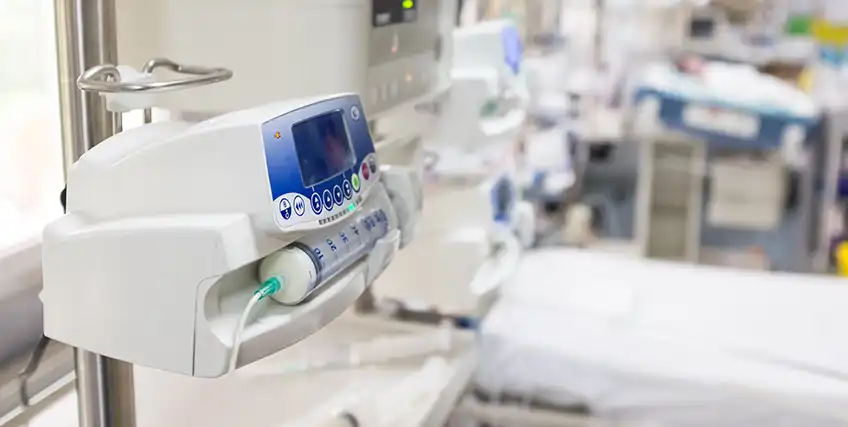Run a Smoother Medical Billing Business with These Tips & KPIs
April 01, 2025 | Last Updated on: April 02, 2025

In the healthcare industry, running your own medical billing business isn't just about sending invoices and collecting payments. It is all about ensuring smooth cash flow, reducing denials, and keeping your medical billing practice financially healthy. However, if you don't have a structured approach, your medical billing business can lead to delayed reimbursement and frustrated healthcare providers.
In this article, we'll explore all the essential tips needed to streamline the process of billing for medical practice, the key performance indicators (KPIs) that will help you measure success, and the medical practice funding that can support your business. No matter if you're handling claims, processing in-house, or opting for outsourcing, these valuable tips will ensure your medical billing company runs efficiently and profitably.
What is Medical Billing and Why is it So Important?
Medial Billing is a service that involves submitting insurance claims, following up on claim submission, and ensuring payers reimburse healthcare professionals for the services rendered. Therefore, this is one of the crucial processes in maintaining the financial health of the healthcare industry.
As the medical billing industry is evolving day by day, many medical billing companies are turning to advanced automation tools. Additionally, they are outsourcing to improve efficiency. The companies are integrating medical billing software and leveraging clearinghouse to streamline the billing processes, reduce denials, and enhance the revenue cycle management (RCM).
Also, ensuring proper credentialing and compliance with HIPAA regulations, the companies strengthen the accuracy and reliability of medical billing services. It is important for the medical billing industry to ensure medical professionals receive timely payments, reducing administrative burdens, and allowing them to focus on patient care.
Important Key Aspects of Medical Billing Business Include:
- Using medical coding such as ICD-10 and CPT codes to ensure accurate claims.
- Adhering to HIPAA compliance for patient health information security.
- Partnering with a clearinghouse to verify medical records and process claims.
- Keeping up with Medicare and health insurance regulations to avoid denials of potential clients.
What is Medical Coding?
Another important term in the medical billing business that plays a crucial role is Medical Coding. It helps in translating healthcare diagnoses, treatments, and procedures into standardized codes such as ICD-10 and CPT. These codes ensure that insurance companies and payers process claim submissions accurately and reimburse providers appropriately.
However, without proper medical coding, errors in claims processing can lead to increased denials, delayed reimbursement, and revenue loss. This requires trained medical coders, and medical billers to work together to ensure compliance with HIPAA regulations and improve the efficiency of the billing process.
Difference Between Medical Billing and Medical Coding
While medical billing and medical coding work closely together, they serve distinct functions in the healthcare industry. Medical coders focus on translating medical services, diagnoses, and procedures into standardized codes like ICD-10 and CPT, ensuring that providers and insurance companies have a uniform language for processing claims.
While on the contrary, medical billers use these codes to prepare and submit insurance claims, follow up on reimbursements, and manage denials. In short, we can say that medical coding lays the groundwork, while medical billing ensures providers receive proper and timely payments. Hence, both the roles are essential for the financial health of healthcare providers and the efficiency of revenue cycle management (RCM).
Essential Tips for Running a Smoother Medical Billing Business
A well-managed revenue cycle management (RCM) system improves financial performance and operational efficiency. It ensures timely reimbursement for healthcare providers, reduces claim denials, and optimizes claims processing workflows.
A strong RCM system also helps in maintaining compliance with HIPAA regulations while integrating with EHR (electronic health records) and practice management tools. Moreover, leveraging technology in medical billing software can significantly cut down on administrative burdens and improve financial outcomes. Here's how to utilize the best practices in medical billing and coding:
Invest in Reliable Medical Billing Software
A robust medical billing software automates tasks, minimizes errors, and speeds up claims processing. Look for solutions that integrate with EHR and practice management systems. Popular options include Kareo, DrChrono, and AdvancedMD.
Stay Updated on Insurance Policies and Regulations
Medical coders and medical billers must stay informed about ICD-10, CPT, and Medicare guidelines. Management associations like American Academy of Professional Coders (AAPC) and the American Medical Billing Association (AMBA) offer training for compliance and credentialing.
Monitor Claim Denials and Work on Reduction Strategies
High denials rates can hurt cash flow. Regular follow-up and claim referrals help identify issues like incorrect medical coding or missing medical records before submission.
Improve Communication Between Front Desk and Billing Teams
Errors often stem from poor coordination between healthcare professionals and medical billing services. Regular training and structured workflows minimize mistakes in claim submission.
Leverage LinkedIn for Networking
To attract potential clients, you need a solid business plan and an effective social media presence. Medical professionals, healthcare providers, and medical billing services often connect on LinkedIn. Building credibility here can attract referrals.
Engage with the Better Business Bureau (BBB)
Listing your medical billing company on the Better Business Bureau improves trust and visibility.
Target Mental Health Practices
Many mental health clinics require specialized medical billing services. Positioning your medical billing business for these providers can boost revenue
Key Performance Indicators (KPIs) to Track for a Successful Billing Business
Tracking key metrics ensures your medical billing company runs smoothly. By regularly monitoring these indicators, businesses can identify areas for improvement, streamline claims processing, and optimize revenue cycle management (RCM). Understanding key performance trends also helps in making informed decisions that enhance cash flow and overall financial stability.
Here are some crucial KPIs:
Clean Claims Rate (CCR)
What It Measures: The percentage of claims accepted on the first submission.
Why It's Important: A high CCR reflects fewer errors in claims processing and quicker reimbursement.
Days in Accounts Receivable (A/R Days)
What It Measures: The average number of days to receive payment after claim submission.
Why It's Important: A lower A/R ensures better cash flow and stability for your medical practice.
Claim Denial Rate
What It Measures: The percentage of denied claims.
Why It's Important: Lower denial rates mean more efficient claims processing and higher reimbursement.
Net Collection Rate (NCR)
What It Measures: The percentage of collected payments after adjustments.
Why It's Important: A strong NCR shows effective revenue cycle management (RCM).
First-Pass Resolution Rate (FPRR)
What It Measures: The percentage of claims paid on the first attempt.
Why It's Important: A higher FPRR ensures reduced time spent on follow-up and appeals.
How Loans Can Support Your Medical Billing Business
Starting a new business or expanding your own medical billing business requires funding. Loans for medical billing practice help with medical billing software, credentialing, and hiring medical billers. Additionally, securing financial resources can assist in covering operational costs, investing in EHR integration, and enhancing revenue cycle management (RCM).
Many medical billing companies also use funding to develop marketing strategies, improve claims processing efficiency, and comply with HIPAA regulations. Whether it's a startup or an established business, having sufficient capital ensures smoother operations and long-term growth.
Term Loans
Term loans provide a lump sum of money with a fixed repayment schedule and set interest rates. These loans are well-suited for long-term investments in medical billing software, office expansion, and credentialing expenses. They help medical billing businesses maintain cash flow while making strategic investments for future growth.
Small Business Administration (SBA) Loans
SBA loans offer low-interest financing options for medical billing companies looking to expand or enhance operations. These loans are particularly useful for hiring medical coders, upgrading EHR systems, or increasing marketing efforts. Additionally, establishing credibility through the Better Business Bureau (BBB) can help secure better loan terms and build trust with potential clients.
Equipment Financing
Equipment financing allows medical billing businesses to purchase essential medical billing software, IT infrastructure, and cybersecurity tools. These loans ensure compliance with HIPAA standards and improve operational efficiency. By leveraging equipment financing, businesses can stay competitive in the ever-evolving medical billing industry.
Business Line of Credit
A business line of credit provides flexible funding for short-term expenses, such as claims processing upgrades, practice management tools, or hiring additional staff during peak billing cycles. This financial tool ensures that a medical billing company maintains financial stability while handling unpredictable operational costs. Compliance with Better Business Bureau (BBB) standards also enhances business credibility and loan approval rates.
Final Thoughts
Summing this up, a medical billing business requires a combination of technology, strategic planning, and financial management to run it successfully. You can implement the right tips by installing a medical billing software to minimize claim errors and improving claims processing efficiency. Additionally, tracking essential revenue cycle management (RCM) KPIs can help you ensure that your business's financial performance remains on track. You can utilize the right medical practice funding options to secure the capital for expanding operations and maintain compliance with industry standards.
Looking to start or expand your medical billing industry venture? Develop a strong business plan and explore funding options to ensure long-term success.
Frequently Asked Questions About Medical Billing Business
What is a medical billing business?
A medical billing business is a process of submitting and following up on insurance claims to ensure healthcare providers receive timely reimbursements for their services. This business involves medical coding procedures, handling claim submissions and managing denials.
How does medical billing differ from medical coding?
Medical coding differs from medical billing as it involves translating medical diagnoses, treatments, and procedures into standardized codes such as ICD-10 and CPT. While medical billing on the other hand uses these codes to create insurance claims, submit them to payers, and ensure reimbursement for healthcare professionals.
What are the key challenges in running a medical billing business?
The various key challenges in running a medical business include claim denials, insurance policy changes, HIPAA compliance, maintaining cash flow, and managing administrative burdens. To overcome these challenges, invest in reliable medical billing software and stay updated on industry regulations.
What are the most important KPIs for a medical billing business?
Some of the most import KPIs for a medical billing business include Clean Claims Rate (CCR), Days in Accounts Receivable (A/R Days), Claim Denial Rate, Net Collection Rate (NCR), and First-Pass Resolution Rate (FPRR). Tracking these KPIs will help your billing business to optimize revenue cycle management (RCM).
How do I market my business of medical billing?
To market your business of medical billing, utilize LinkedIn for networking, list your business with Better Business Bureau (BBB), target mental health practices, and leverage referrals. You can also increase your social media presence and engage with various medical professionals to boost credibility and attract new clients.




